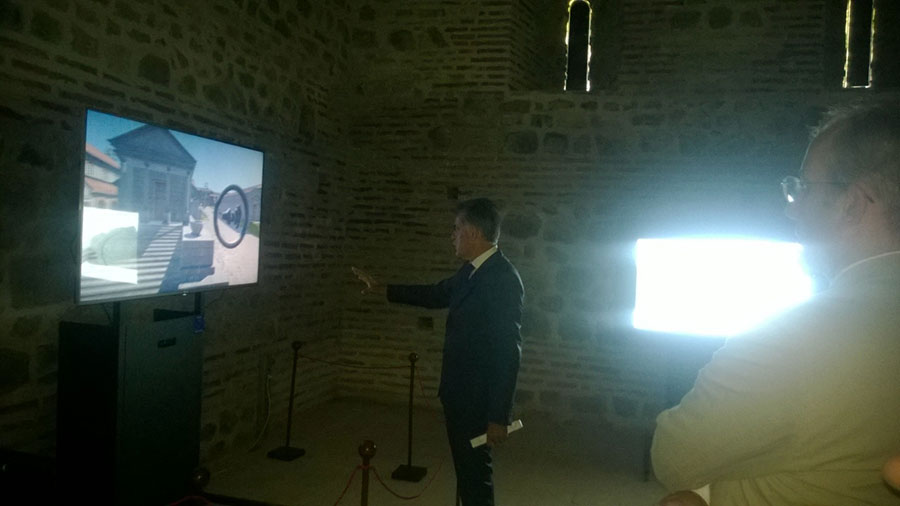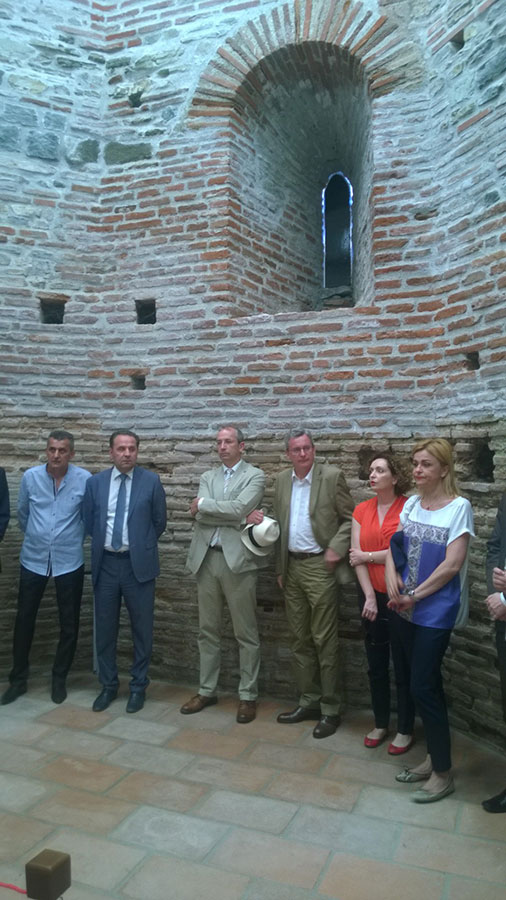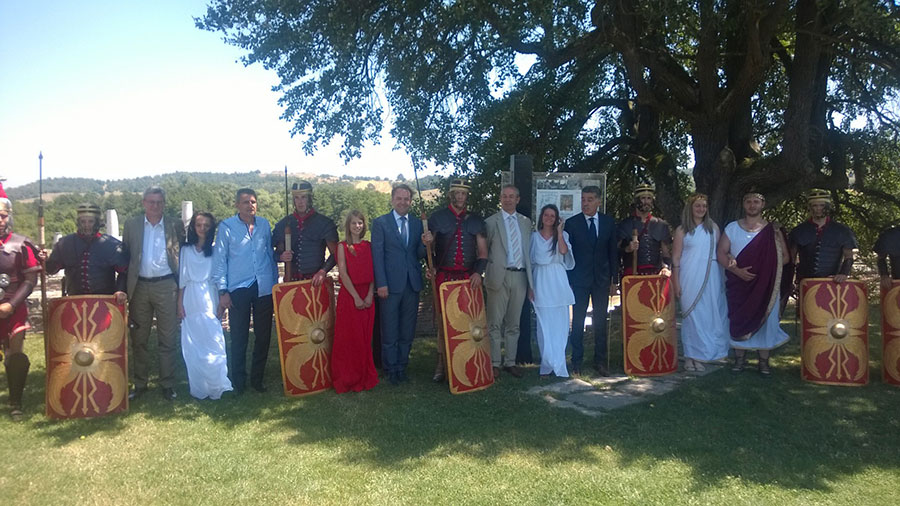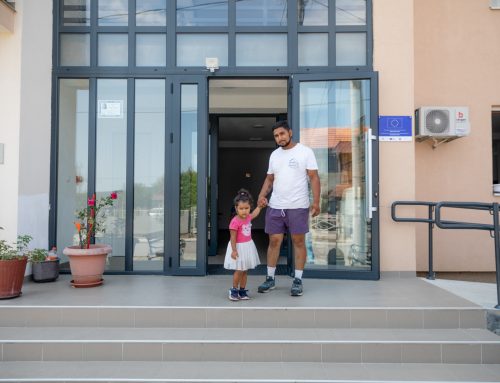Gamzigrad near Zajecar, more precisely the Felix Romuliana imperial palace, one of the most important archaeological sites in Serbia is now home to the newly opened Multimedia Centre, one of the first of its kind in Serbia. This is one of the outcomes of the EU HERA Project “Sustainable tourism management of Adriatic HERitage” funded through IPA Adriatic cross-border cooperation programme.
In his remarks during the opening of the centre, Head of the EU Delegation to Serbia Michael Davenport reminded that the interactive guide through Gamzigrad smart phone app was launched in May 2015 and added that through the funding of the entire project, from feasibility study to the implementation of the project as we know it, the EU “showed concrete support to the development of Serbia and provided continued and consistent support to projects in various fields. All of it with the aim of bringing Serbia closer to the EU and link it to projects and the offer provided by the EU to both EU and non-EU citizens in Europe.”
State of the art computer and hologram equipment has been put into service and made available to the visitors of the Multimedia Centre; also, construction works have been completed on three towers which now serve as exhibition spaces and a holographic room where visitors can learn more about the flourishing period of Felix Romuliana. Standing in front of the holographic screen, Director of the Museum in Zajecar Bora Dimitrijevic guided the visitors of this archaeological site through its history.
 “The EU has allocated nearly EUR600 000 for the project activities, whereas the Ministry of Tourism, being the Serbian partner in the project, allocated additional 15 per cent of this amount,” Davenport said.
“The EU has allocated nearly EUR600 000 for the project activities, whereas the Ministry of Tourism, being the Serbian partner in the project, allocated additional 15 per cent of this amount,” Davenport said.
Serbian Minister of Trade, Tourism and Telecommunications Rasim Ljajic said the project of Multimedia Centre in Gamzigrad would increase tourist traffic at the site and the entire region of Timocka Krajina.
“Last year, Gamzigrad recorded some 28 000 visitors, whereas the first half of 2016 saw an increase of 20 per cent in tourist traffic. I hope the innovation would attract a higher number of domestic and foreign tourists,” Ljajic said.
He pointed out that thanks to EU funds and RSD22 million allocated by Serbian Government for the development of Gamzigrad Romuliana, the archaeological became increasingly important as an attractive tourist destination.
 Davenport stressed that the EU was also engaged in other projects aimed at improving the tourist potential of Serbia. Indirectly, this should contribute to Serbia’s economic growth, in its eastern part in particular. The pan-European project would serve as a great opportunity to include Zajecar, Gamzigrad or Felix Romuliana – which is on the UNESCO World Heritage list – in European cultural and tourist offer and, being in the vicinity of the Danube, the largest European river transporting thousands of tourists, only increases this potential.
Davenport stressed that the EU was also engaged in other projects aimed at improving the tourist potential of Serbia. Indirectly, this should contribute to Serbia’s economic growth, in its eastern part in particular. The pan-European project would serve as a great opportunity to include Zajecar, Gamzigrad or Felix Romuliana – which is on the UNESCO World Heritage list – in European cultural and tourist offer and, being in the vicinity of the Danube, the largest European river transporting thousands of tourists, only increases this potential.
“The EU has already invested significant funding of EUR565 000 in modernisation of neolithic archaeological site Lepenski vir, which offers an interactive tour similar to the one in Gamzigrad,” Davenport reminded and added that “the EU has invested nearly EUR6 million in the reconstruction of Golubac Fortress, construction of a visitor centre and, in the coming days, we expect a tunnel to be commissioned on the ring road around the Fortress, which will make the Fortress a unique tourist attraction devoid of traffic.”




